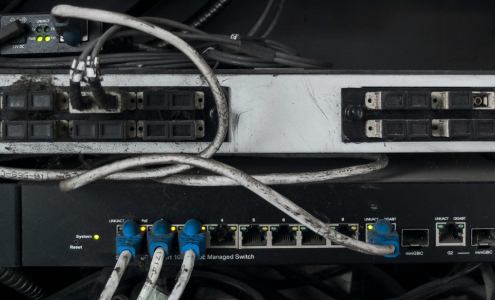 https://www.technologyresponse.com/wp-content/uploads/2025/05/How-the-Economy-is-Hitting-Front-Range-Builders-Where-It-Hurts—Their-Tech.jpg
1250
2000
Abstrakt Marketing
/wp-content/uploads/2024/06/logo-color.svg
Abstrakt Marketing2025-05-19 08:06:142025-07-18 07:28:40How the Economy is Hitting Front Range Builders Where It Hurts—Their Tech
https://www.technologyresponse.com/wp-content/uploads/2025/05/How-the-Economy-is-Hitting-Front-Range-Builders-Where-It-Hurts—Their-Tech.jpg
1250
2000
Abstrakt Marketing
/wp-content/uploads/2024/06/logo-color.svg
Abstrakt Marketing2025-05-19 08:06:142025-07-18 07:28:40How the Economy is Hitting Front Range Builders Where It Hurts—Their Tech
Remote Work Infrastructure Is the New Normal
In the wake of the COVID-19 pandemic, business owners all over the world began to reconsider the benefits of having a central, physical office. Companies were forced to adopt new, emergency workflows that allowed people to work remotely to mitigate the risk of infection.
As a result, business owners awakened to the idea that hybrid and remote work arrangements are highly beneficial for almost everyone involved. Business owners can save money on physical assets and infrastructure, employees get to work more flexibly and from the comfort of home, and everyone can operate more efficiently and more productively. In many ways, it’s the perfect modern technology solution.
Because of this, the average IT work environment has evolved to incorporate this “new normal.” More people are working remotely and in hybrid work environments than ever before. But if you want to be successful with this arrangement, you need to proactively set employee expectations for remote work and use the services of a modern MSP to achieve better results.
What Is Hybrid/Remote Work?
Remote work is a modern technology solution that allows employees to work from a location outside of a central office. Most commonly, people work from home, but they may also use a shared workspace, a coffee shop, a library, or somewhere else entirely. In a hybrid arrangement, at least some employees are allowed to work remotely, or at least part of the time. However, there’s still a central location where many employees must be physically present.
How to Set Employee Expectations for Remote Work
What are the most important ways to set employee expectations when integrating a modern technology solution like remote work?
- Have a Conversation: While many people have now acclimated to remote work environments in a professional setting, there are still many people with misconceptions about how it actually plays out. They may not understand the importance of maintaining proper communication lines or they may have flawed ideas about just how flexible this arrangement is. That’s why your first step should be to have a conversation, so you can set better expectations and get a feel for this employee’s past experience with remote work.
- Provide IT Resources and Services: If you want your remote employees to be successful in a remote work environment, don’t put the burden of securing IT resources and services on them. You should provide them with all the assets, software, instructions, and support necessary for them to succeed. Technology is the backbone of any remote or hybrid work environment, so it’s an investment you have to make proactively.
- Set Up Better Communication Channels: The better your employees can communicate with each other, the more productively they’re going to work. That’s why one of your biggest priorities is setting up better communication channels. Once employees can communicate fluidly with each other throughout the day, everything else should come naturally.
- Establish Clear Protocols and Procedures: It’s on you to come up with a remote work policy that your employees can follow. Most of your employees won’t take it upon themselves to follow best practices for cyber security, nor will they be able to read your mind and determine exactly what you want from them throughout the day. Do your best to establish clear protocols and procedures so that there’s no ambiguity.
- Invest in Security: You know that cybersecurity is important, but it’s even more important in a remote or hybrid work environment. Keeping your security infrastructure intact and consistent across the board is more difficult when you have hundreds, or even thousands of employees in as many different locations. You have to be proactive and focused here to minimize your vulnerabilities.
- Provide Thorough Documentation: In addition to explaining all your procedures, rules, and guidelines to your employees, it’s important to provide them with thorough documentation. This way, they can look up details as needed, answer their own questions, and clarify any points of confusion that come up.
- Offer Further Training and Education: Training and education goes a long way. Though it requires an upfront investment of time and money, it should equip your employees with better knowledge and skills they can use to navigate this remote work environment successfully.
- Offer More Support: It’s also important to offer ongoing support to your employees. If they have a problem with connecting to your network, or if they have a problem with the device you’ve given them, they should have clear and convenient options for resolving these problems.
Misconfiguration
Did you know that most security breaches are caused by human error? According to Verizon’s 2022 Data Breach Investigation, 82% of breaches involve a human element.
When your business migrates to the cloud, it’s not necessarily a 1:1 transfer—some software and applications don’t line up perfectly with the cloud. This means they need to be reconfigured, and that can leave holes within your system that can be exploited by malicious users.
For example, your system’s Internet Control Message Protocol (IMCP), which reports network device errors, becomes a common attack vector for Distributed Denial of Service (DDoS) attacks and malware if it’s left open. The ICMP displays if your server is responsive and online, and malicious users use that information to pinpoint their attacks.
An open ICMP is just one of many examples of misconfiguration that put your data in the cloud at risk. When you migrate to the cloud, it’s important to do so with the assistance of a reputable managed service provider. They have the tools and expertise to provide you with the right degree of scrutiny for your cloud migration.
If your business is starting a remote work program, you need to ensure your team is set up for success. Explore our blog and discover how cloud-based infrastructure can improve your remote operations.
Learn More
How a Modern MSP Can Help
A managed service provider (MSP) in the IT world can help you navigate this new normal in several ways.
Policy Creation and Enforcement
Every organization that operates remotely should have some kind of remote work policy in place. Although modern technology solutions can improve your productivity, you need to put specific measures in place that establish best practices. The experts in your MSP can help you write, distribute, and eventually enforce better remote and hybrid work policies.
Asset Management
Are you going to buy and distribute hardware assets for your remote and hybrid employees to use? The right MSP partner can help you find better assets, track them, and manage them properly.
Training and Education
Some MSPs are willing to provide direct training and education to your workers, so they’re equipped with all the knowledge and experience necessary to navigate a remote/hybrid work environment.
Maintenance and Improvements
Do you need to issue regular maintenance and add new upgrades and improvements? Your MSP partner can help you here as well.
Remote Monitoring and Reporting
If you want to remain secure and maximize uptime, you need a system of remote monitoring and reporting in place. For most MSPs, this is a typical service offering.
Help and Troubleshooting
Whenever your employees get stuck or need help resolving a tech issue, your MSP should be available to help.
Finding a Managed IT Consultant in Denver
If you’re currently managing a remote or hybrid workforce, or if you’re planning to create one in the near future, you’ll need a modern MSP who can help you with the details. Wherever you are in the decision-making process, we can help. Contact us for a free consultation today!
Share This Post
More Like This
 https://www.technologyresponse.com/wp-content/uploads/2025/05/How-the-Economy-is-Hitting-Front-Range-Builders-Where-It-Hurts—Their-Tech.jpg
1250
2000
Abstrakt Marketing
/wp-content/uploads/2024/06/logo-color.svg
Abstrakt Marketing2025-05-19 08:06:142025-07-18 07:28:40How the Economy is Hitting Front Range Builders Where It Hurts—Their Tech
https://www.technologyresponse.com/wp-content/uploads/2025/05/How-the-Economy-is-Hitting-Front-Range-Builders-Where-It-Hurts—Their-Tech.jpg
1250
2000
Abstrakt Marketing
/wp-content/uploads/2024/06/logo-color.svg
Abstrakt Marketing2025-05-19 08:06:142025-07-18 07:28:40How the Economy is Hitting Front Range Builders Where It Hurts—Their Tech https://www.technologyresponse.com/wp-content/uploads/2024/08/2021April16Hardware_A_PH-dp66Ex.jpeg
300
900
Nate Riggins
/wp-content/uploads/2024/06/logo-color.svg
Nate Riggins2021-04-16 21:00:002025-07-18 07:28:49Replacing servers? Consider these 3 questions first
https://www.technologyresponse.com/wp-content/uploads/2024/08/2021April16Hardware_A_PH-dp66Ex.jpeg
300
900
Nate Riggins
/wp-content/uploads/2024/06/logo-color.svg
Nate Riggins2021-04-16 21:00:002025-07-18 07:28:49Replacing servers? Consider these 3 questions first https://www.technologyresponse.com/wp-content/uploads/2024/08/2021March29Hardware_A_PH-61h380.jpeg
300
900
Nate Riggins
/wp-content/uploads/2024/06/logo-color.svg
Nate Riggins2021-03-29 21:00:152025-07-18 07:28:50Choosing your ideal keyboard
https://www.technologyresponse.com/wp-content/uploads/2024/08/2021March29Hardware_A_PH-61h380.jpeg
300
900
Nate Riggins
/wp-content/uploads/2024/06/logo-color.svg
Nate Riggins2021-03-29 21:00:152025-07-18 07:28:50Choosing your ideal keyboardAbout Us
Technology Response Team delivers comprehensive IT and cybersecurity solutions for nationwide businesses with locations in Denver and Louisville.

